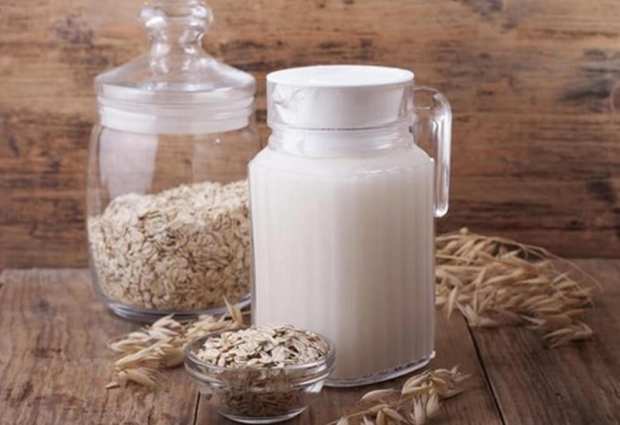How Cafes Created The Momentum That Made Oat Milk

Plant-based milks are incredibly trendy as of 2019, but are far from a new phenomenon. Soy milk (or something quite like it) has been on the menu in China since the 14th century, and an early variant on almond milk has been around since the Middle Ages. In more recent memory, soy milk began taking modern markets by storm in the early 1970s, growing steadily in sales and peaking in 2008 with annual sales of $1.2 billion.
But about a decade ago, soy lost some of its shine with concerns that it might not be as healthy or environmentally sound as people had hoped – and besides, there was a new plant-based sensation in town. The rise of almond milk (and other nut-based milks) about a decade ago was sharp. By 2015, almond milk was outselling soy nearly three to one, and by 2018 it had surpassed soy’s $1.2 billion peak.
But almond milk has some issues. Growing almond is environmentally costly – particularly in terms of water costs, given that 80 percent of the world’s almonds are grown in drought-prone California. And the mitigating factor is not exactly comforting: There aren’t actually that many almonds in a typical container of almond milk. According to Cheryl Mitchell, the chief scientist of Elmhurst Milked, almond milk as we know it is mostly water, oil, sugar and gums emulsified with a light dusting of nuts on top.
Also, according to one Vox writer, it has some consistency issues.
“I would not call it creamy, exactly, but even in coffee, it mostly does the job,” Rachel Sugar noted.
Luckily, there is no shortage of “milkable” plants in nature. Apart from literally any variety of nut, one can also pick up a carton of hemp, pea, quinoa or coconut milk at their local health food startup.
But for coffee drinkers – particularly those who have been living in a major U.S. metro for the last two years – the alternative milk of the moment is oat. It is likely the brainchild of Swedish food scientist Richard Oste, the founder of Oatly, who in the mid-90s figured out the process for extracting “milk” from oats. The product was not popular at first – other than a small international collection of dedicated drinkers, oat milk was mostly an unknown commodity for the first 20 years of its existence. In fact, when Oatly CEO Toni Petersson first took over in 2012, he himself didn’t really know oat milk existed.
What changed the game for Oatly specifically, and oat milk in general, was a different go-to market. Instead of trying to sell their product to consumers writ large, they focused their recruitment efforts on independent coffee shops and baristas, believing that with the right brand ambassadors, they could convert consumers to the wonders of oat milk.
“It created that discovery experience for consumers,” said Mike Messersmith, Oatly’s general manager. Consumers trust their baristas, and baristas know their customers (particularly their dairy-free ones) and are in a unique position to push new products.
Which they did – with much greater success than initially anticipated. Oatly launched in the U.S. in 2016, with a handful of high-end New York City coffee shops offering its product. By 2017, that had grown notably to over 200 stores, but still marked a fairly under-the-radar start. By 2018, news headlines were bemoaning the national oat milk shortage, which left enthusiasts from the Wesleyan College campus to the streets of Brooklyn bereft at the possibility of oat milk-free coffee. The company had ramped up production by 1,250 percent in response to the spike in interest, but still found it difficult.
“How do we supply when the growth is this crazy?” Petersson asked.
And, of course, other firms have been ready and willing to step in and help meet that supply – from established names in the oat game like Quaker to legacy milk players like Hood that are pushing their first plant-based product.
“I think it would be incredibly hypocritical of us as a company if we said both that we believe oat is the best source ingredient – the best product from a nutritional, environmental, sustainability basis – but then also we should be the only ones that do it,” Messersmith said. “I think the reality is, we would be thrilled if the entire category was nothing but oat milk tomorrow.”
As long as it’s good oat milk, he clarified. For a product that is still new to the market, bad versions are the bigger problem, not competition and variety.
